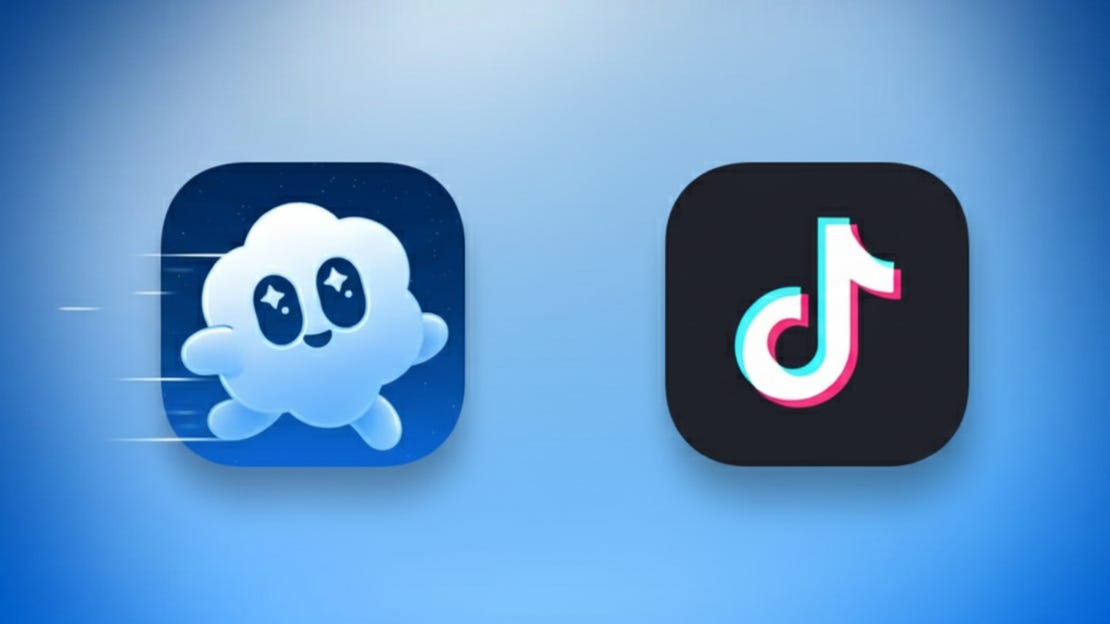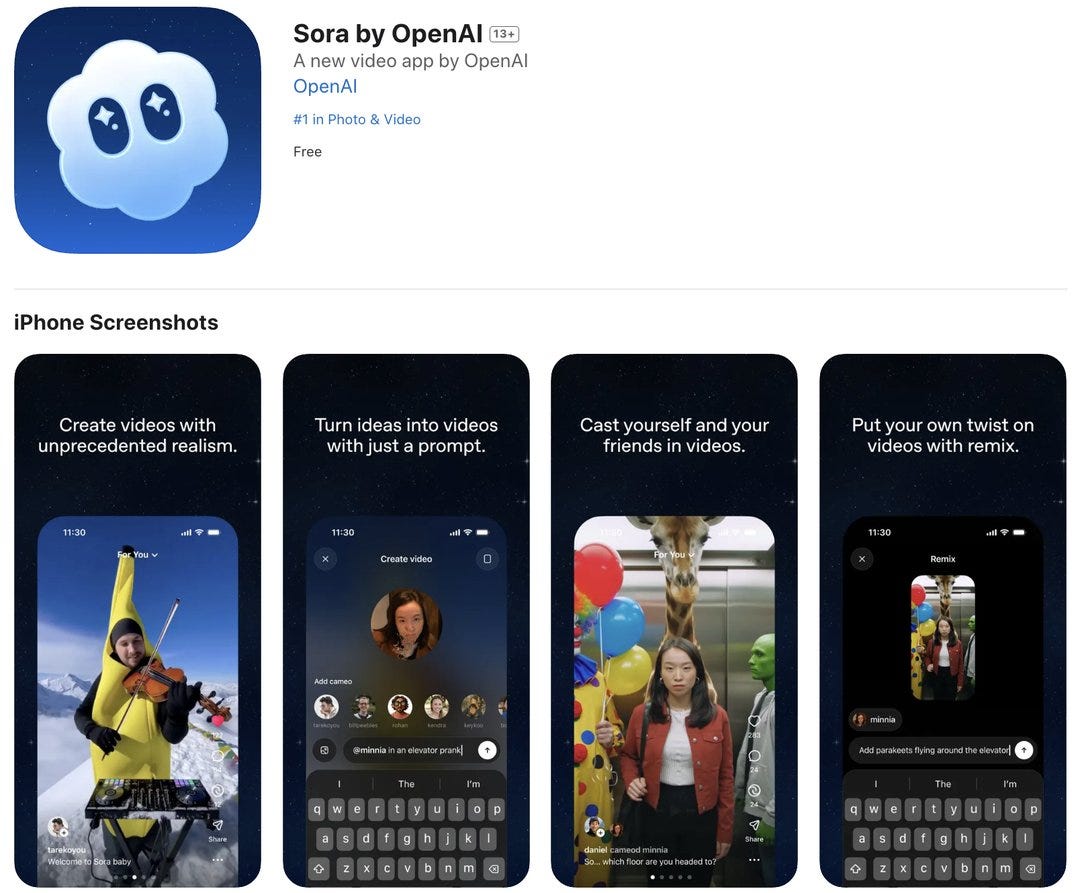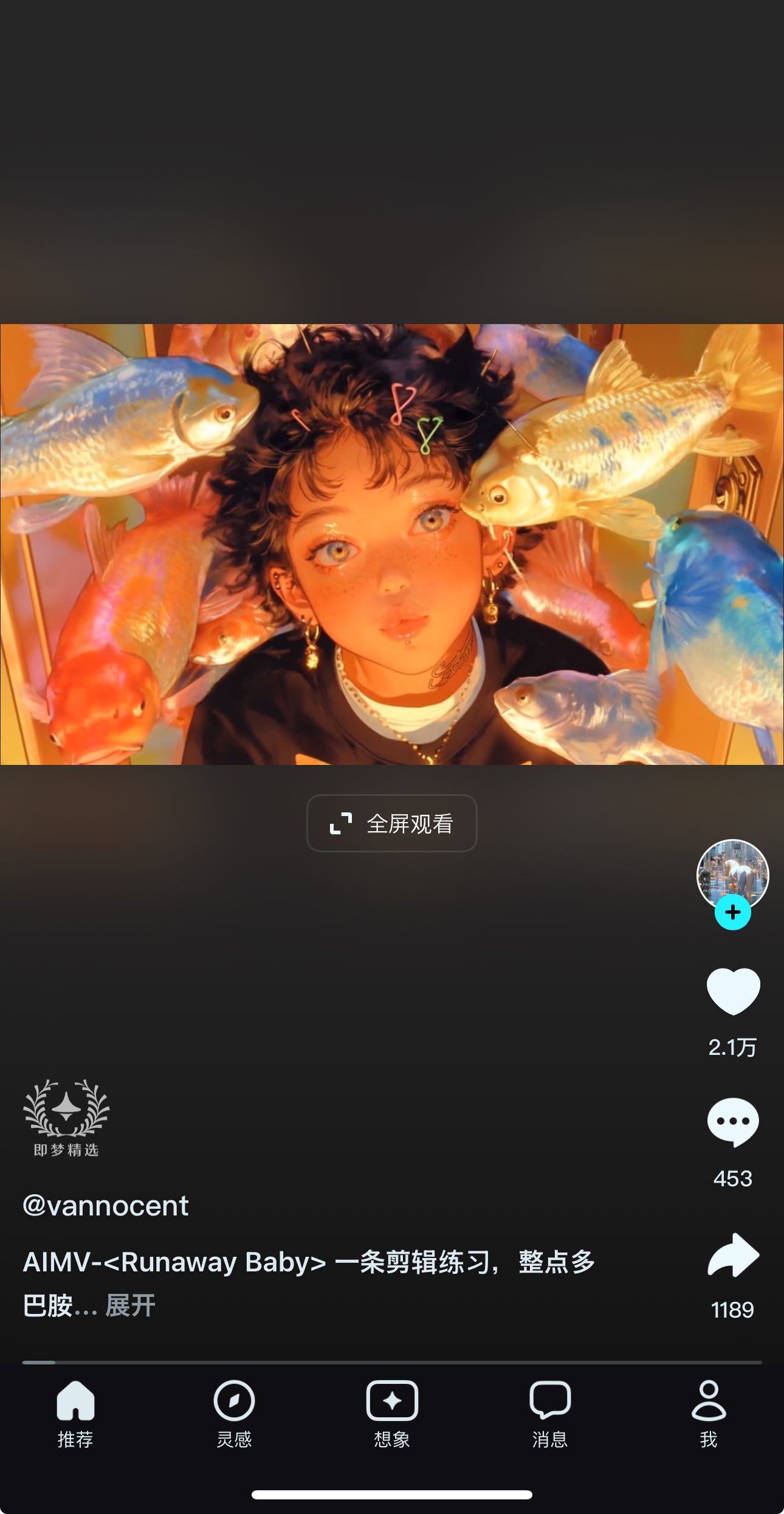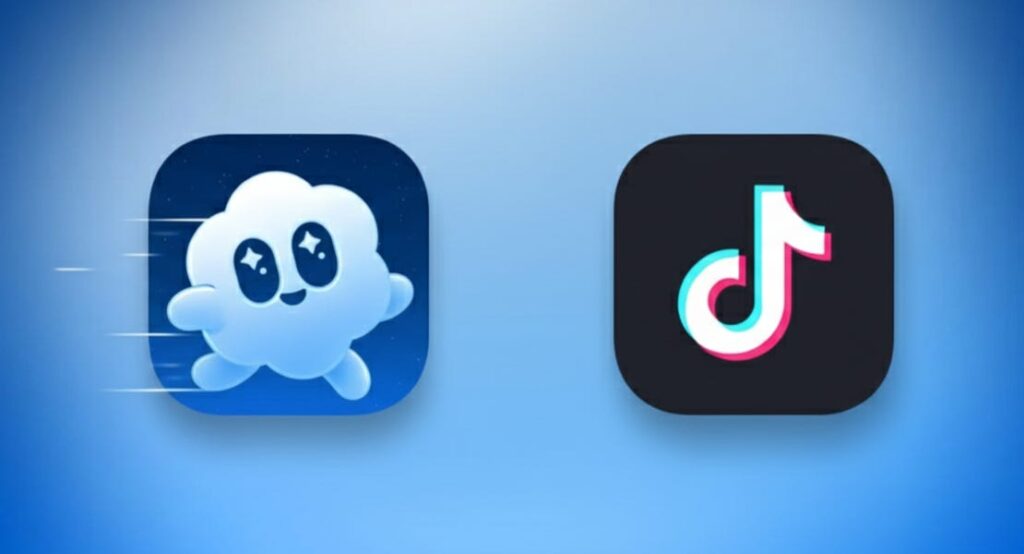
Hi, this is Tony! Welcome to this issue of Recode China AI, your go-to newsletter for the latest AI news and research in China.
Sam Altman is probably delighted to see his likeness appearing in virtually every AI-generated video circulating on Sora, his company’s latest AI video generator app.
OpenAI launched Sora—both the name of the text-to-image model and the app—on the iOS App Store last week, which as anticipated rapidly went viral. The video quality is substantially improved compared to the first-generation Sora model, which was previewed in February 2024, in terms of the complexity of movements, the heightened realism that more closely mirrors the physical world, and improved consistency across frames. The synchronization of video and audio, which wasn’t technically impossible (Google’s Veo 3 also excelled at video-audio alignment), is pivotal in transforming Sora from a laboratory experiment into a viable consumer application that people can genuinely engage with.

The app is highly reminiscent of ByteDance’s short video app TikTok, featuring a 9:16 vertical video format and a scrolling function that lets users advance to the next video with a simple swipe.
But after experimenting with it for several days, I’ve concluded: It’s not an AI TikTok.
TikTok’s success stems from its ability to match content with users based on their interests with remarkable precision, thanks to their sophisticated recommendation algorithms. This is not what Sora is built around.
Sora is more akin to a social app, like AI Instagram.
The app is exclusively accessible to users with invitation codes, which introduces an inherent layer of socialization. The standout feature of Sora is Cameo, essentially a personalized avatar. According to OpenAI, Cameo refers to a user’s authenticated likeness (face + voice) that can be “cast” into AI-generated videos. The Cameo feature allows you to opt in by recording a brief, verified video that Sora subsequently uses to generate content featuring your likeness.
Source: @PJaccetturo
This feature is fundamentally designed to incentivize social groups to create imaginative videos of their peers and have fun together. The enjoyment of social interaction is predicated on familiarity rather than the quality of the videos themselves. The photos in your social feed aren’t necessarily high-quality, but they resonate differently because they feature people you know. This also explains why the invitation code mechanism has proven so effective—it’s naturally suited for viral dissemination through social networks.
Another distinctive feature of Sora is Remix. You can effortlessly tweak or extend a posted AI video via your own prompt (adding, removing, or altering elements) while maintaining the same style. This is an AI-native capability that was previously impossible without Sora’s technological sophistication. This kind of visual consistency and reproducibility amplifies the app’s entertainment value. Within the app, you can swipe from left to right to explore various iterations of the original video.
Source: @juanstoppa
The third aspect, which many may have overlooked, is that its 10-second video can tell stories in multiple shots. They’re no longer isolated video fragments but incorporate camera movements, multiple shot transitions, and deliberate framing choices. This represents a capability that hasn’t been demonstrated before.
Since this newsletter primarily focuses on China’s AI ecosystem, the first questions are: Does China have a comparable app? If so, how are they performing? When will China replicate Sora’s functionalities?
Let’s address the last question first: Yes, they will, and quickly. Remember Google’s Nanobanana image generator that transforms your photo into a garage kit figurine? Chinese companies replicated that feature within a week.
So does China have any equivalent to Sora? In terms of models, there are numerous contenders: Kling from Kuaishou, Hailuo from MiniMax, Vidu, and many more.
In terms of applications, Sora’s most formidable competitor in China is ByteDance’s Jimeng (即梦). Jimeng initially launched in August 2024, enabling users to generate images from text and videos from images. ByteDance naturally incorporated the addictive short-video scrolling mechanism into Jimeng as well.
Source: @hq4ai
The app features five tabs: the leftmost is short video scrolling; the second displays a gallery of both videos and images, like Instagram or Xiaohongshu (Little Red Book); the central tab houses the creation dashboard for images, videos, digital avatars, and motion replication; with the remaining tabs dedicated to messaging and personal account management. Behind Jimeng is ByteDance’s in-house video generator model Seedance 1.0.

ByteDance has invested a lot of resources in Jimeng. They elevated the app’s strategic priority in late 2024, positioning it alongside their video editing tool Jianying (CapCut) as next-generation entry points for multimodality with minimal barriers to entry. Meanwhile, Doubao, the company’s flagship chatbot, was then considered as a transitional format, as management held skepticism about chatbot monetization potential. Jimeng is led by Zhang Nan, the former CEO of Douyin, TikTok’s Chinese counterpart.
At its peak, Jimeng reached nearly 9 million monthly active users, yet it failed to achieve the viral sensation status of Sora or DeepSeek. One reason I believe Jimeng hasn’t gained traction is that most users still cross-post their viral AI videos on TikTok and Douyin. As a result, while AI-generated video expands TikTok’s content ecosystem, it doesn’t necessarily drive Jimeng’s success as a standalone platform.
This is why I believe Sora’s approach is ingenious—features like Cameo compel users to remain within the app’s ecosystem.
But how long will Sora’s success endure? The video quality remains inconsistent and somewhat sloppy, and the fervor surrounding Sora appears to be waning more rapidly than the Ghibli animation style that propelled ChatGPT’s image generation into the spotlight. Thus far, most entertainment-centric AI applications have either faltered or fallen short of expectations (with NSFW content being the exception). Will Sora defy this pattern?

